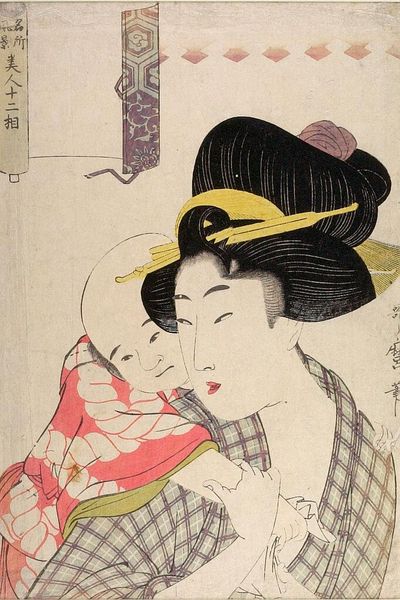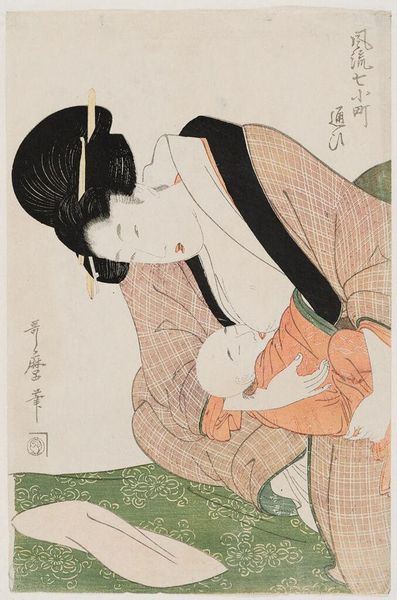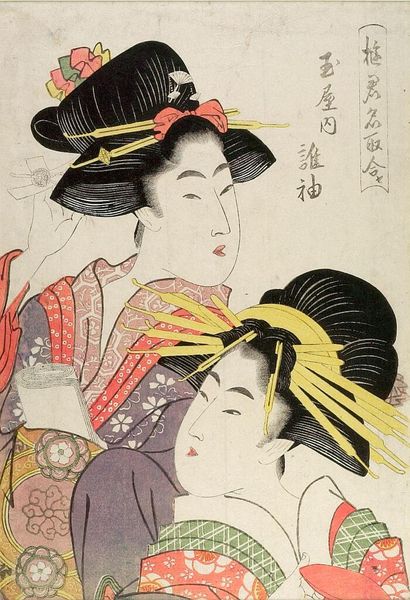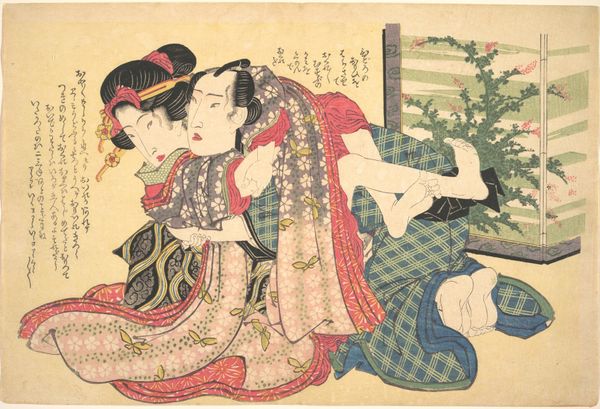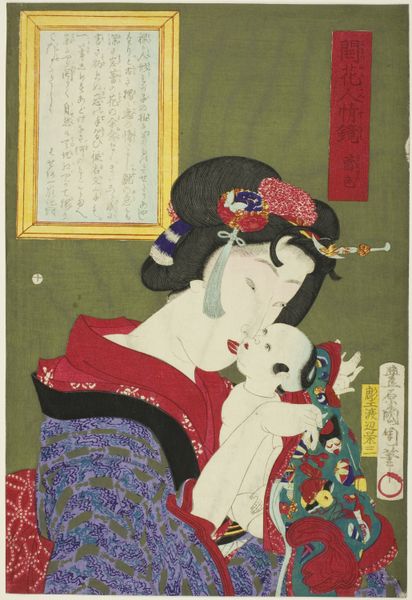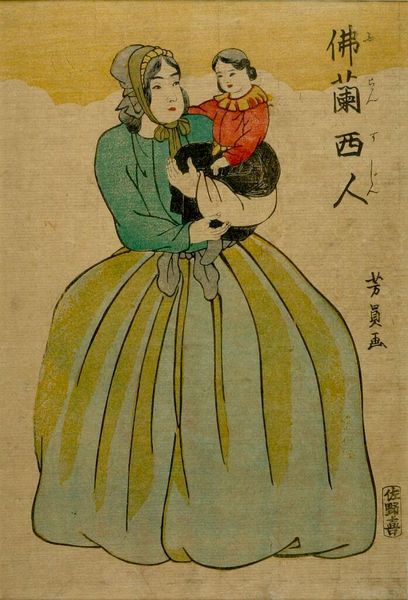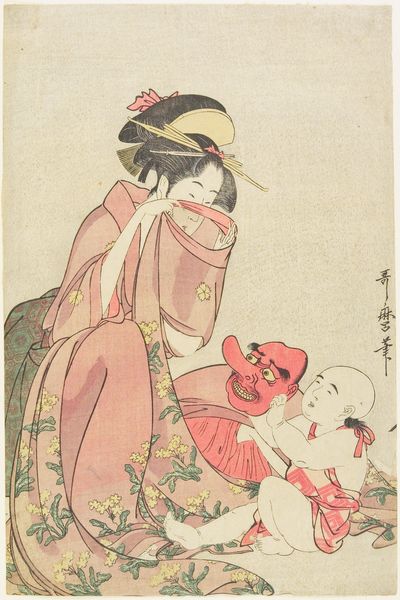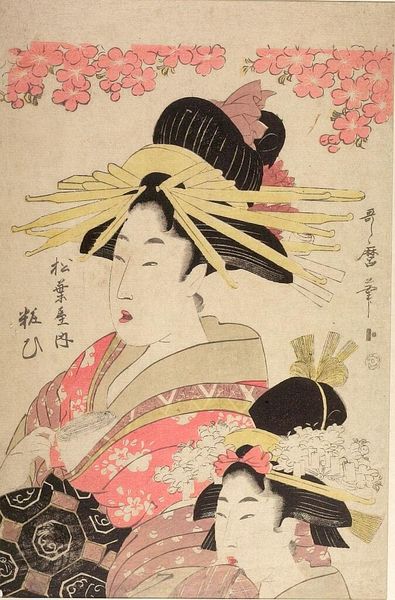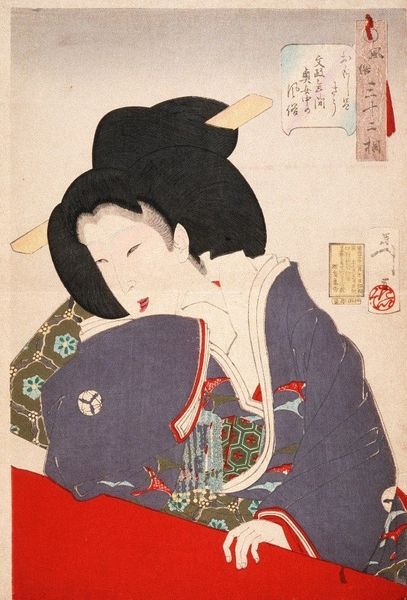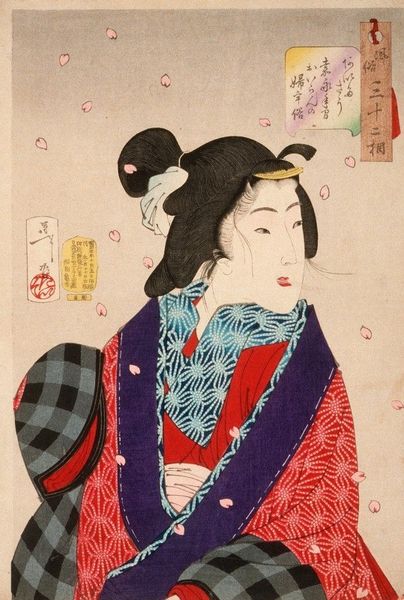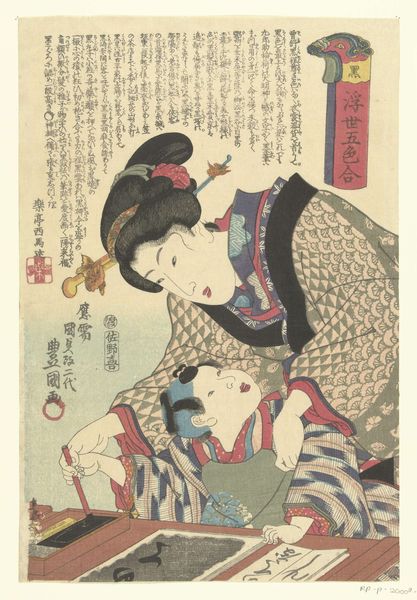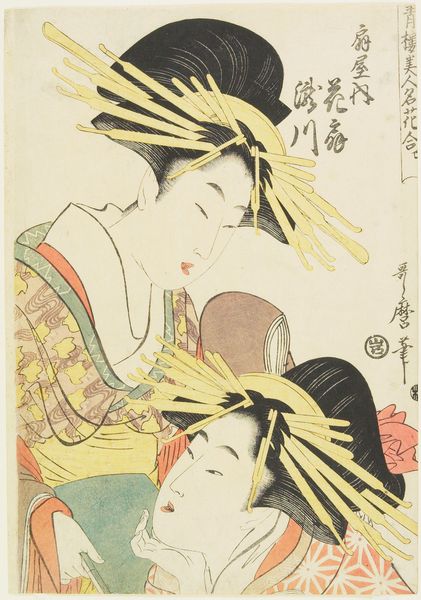
textile, watercolor, woodblock-print
#
portrait
#
water colours
#
asian-art
#
textile
#
ukiyo-e
#
watercolor
#
woodblock-print
#
group-portraits
#
watercolour illustration
#
watercolor
Copyright: Public domain
Curator: My immediate reaction is tenderness. There’s such an evident softness radiating from this image. Editor: Indeed. What we're observing is a woodblock print likely crafted by Tsukioka Yoshitoshi. It is known as 'Cherishing'. We see a woman cradling a baby. Woodblock printing was, of course, a crucial element of the Ukiyo-e movement and portraiture was very common, depicting fashionable courtesans or prominent Kabuki actors. But this feels very intimate. Curator: Absolutely. This is not the idealized beauty we see celebrated. Instead, there is a candid depiction of maternal love and vulnerability. Look at how the textile that wraps around them both features this repetitive water lily or chrysanthemum-like flower – repeated symbolic protection perhaps, resonating deeply with enduring human needs for protection and nurture. What does the historical context tell you about its reception? Editor: Prints like these became affordable, allowing a wider audience access to artistic works, thereby influencing popular perceptions of beauty, motherhood and family. We are not just looking at art, but how artistic images are woven into the fabric of social consciousness, shaping societal norms and values over time. Consider the evolution of images depicting women in public life, and how the narrative shifts with political changes. Curator: It is beautiful how you can sense a story, even if you do not know the precise origins. And there are complex emotional depths contained within what appear to be simple lines and flat blocks of color. Yoshitoshi has skillfully used the Ukiyo-e tradition to evoke a much deeper meditation. How does the role of art, particularly printmaking, intersect with broader sociopolitical forces, like evolving family structure or role of women at the time? Editor: Precisely, especially regarding distribution and the commodification of imagery. One might discuss gender dynamics and challenge assumptions about artistic canons by highlighting how the image operates within systems of cultural production, thus changing the way how art influences behavior in certain ways. These kinds of pictures really helped create the modern consciousness as well, of mother and family. Curator: An amazing point of consideration for an art form often deemed decorative. Editor: Indeed! An excellent point, and always something to reflect on.
Comments
No comments
Be the first to comment and join the conversation on the ultimate creative platform.
